Hamstring muscles aren’t actually strings, although sometimes it may feel like they are. They have nothing to do with ham either. They are in fact a group consisting of three large muscles behind your thigh that run from just below your buttocks to the area of your knee. The muscles of the hamstrings enable you to flex or bend at the knee and extend or straighten at the hip.
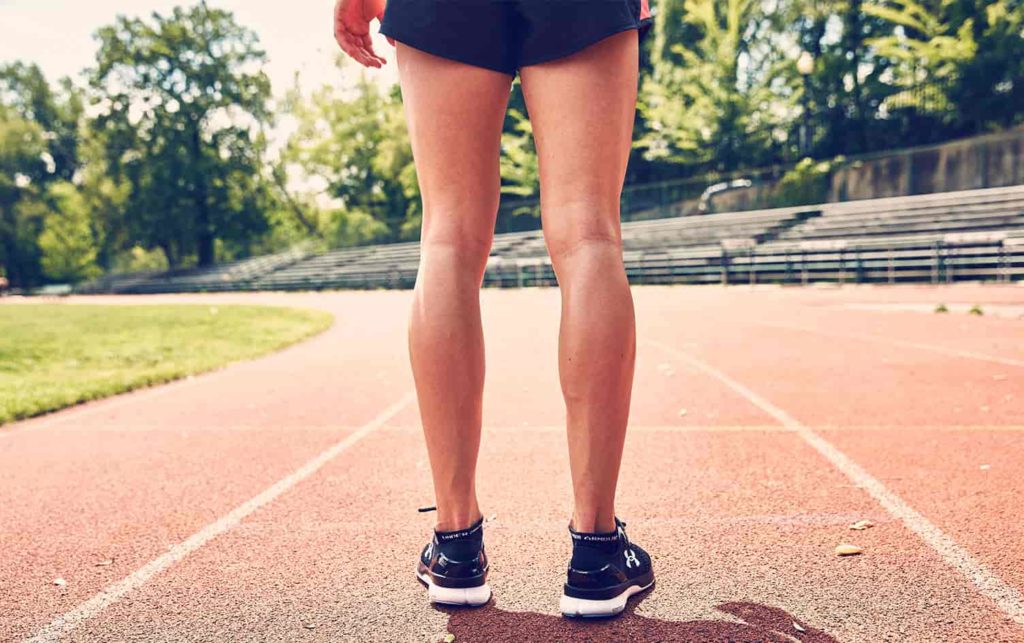
Hamstring origin and insertion
So where is your hamstring muscle located exactly? As we already mentioned, the hamstrings are a group of three muscles that run down the back of your thigh. Their main function is to move your hip and knee. All of the hamstring muscles begin from the bottom part of your pelvis called the Ischial Tuberosity, or the sit bone. They run across the knee and attach to your lower leg. Let’s examine hamstring origin and insertion in more detail.
Biceps Femoris Muscle
As you may see from the name of this muscle, it has two parts or heads. They are the long head and the short head. Note that only the long head is considered a part of the hamstring muscle group.
- The long head starts from the Ischial Tuberosity or your sit bone.
- The short head originates from Linea Aspera, which is an edged line on the back of your femur.
Both the long and the short head of this muscle later merge into one tendon that attaches at the head of the fibula or the calf bone. This is the smaller bone of the two bones that make up the lower leg.
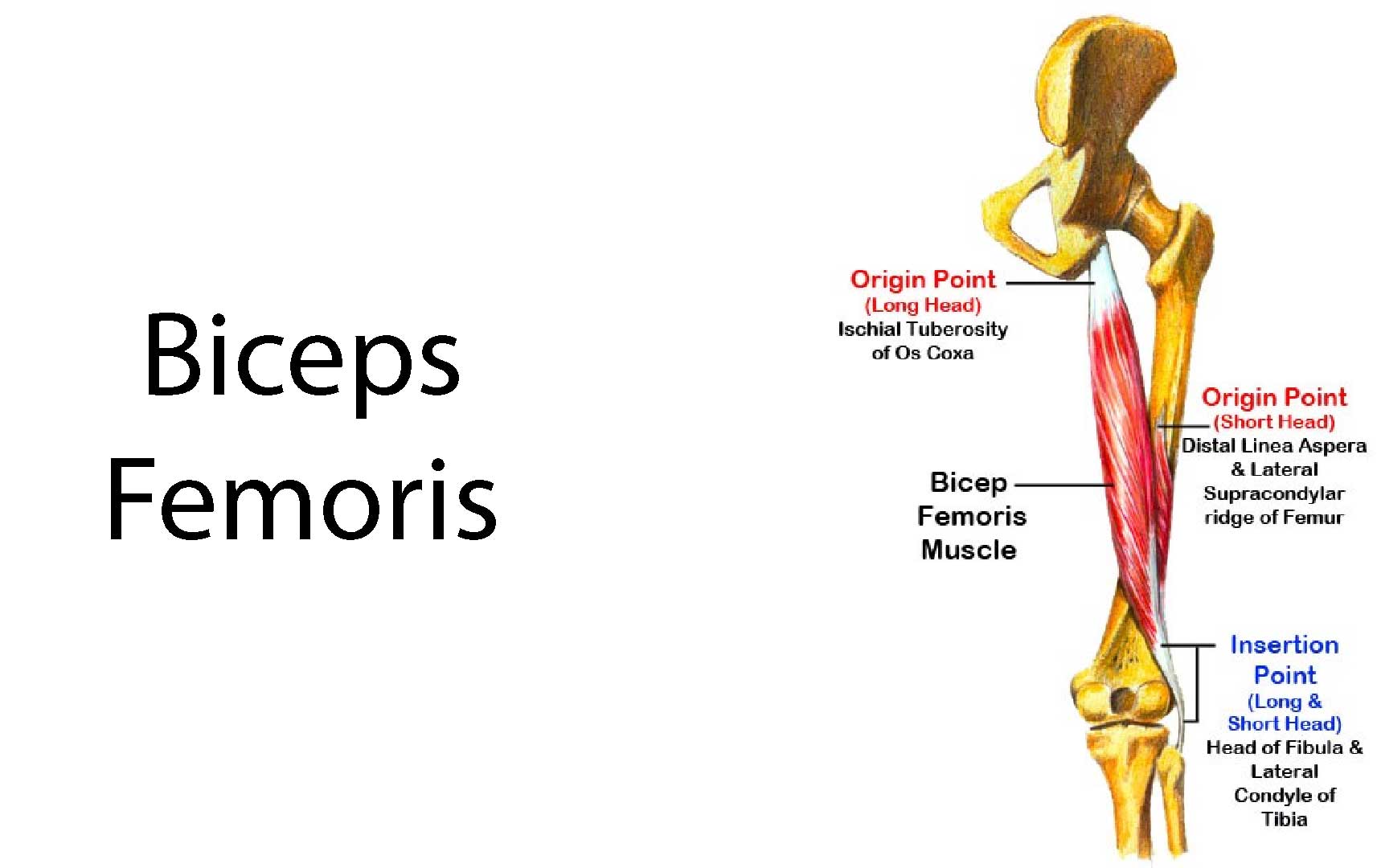
Semitendinosus Muscle
This muscle is long and superficial. Just like the long head of the Biceps Femoris, the Semitendinosus muscle also originates from the Ischial Tuberosity. Furthermore, these two muscles actually share the same tendon at their point of origin. Semitendinosus, just like any other hamstring muscle runs down the back of the femur, ending with a long tendon. This is actually where it gets its name from. The tendon starts just below the middle of the thigh and inserts into the inner part of the upper tibia or the shin bone – the larger bone making up your lower leg.
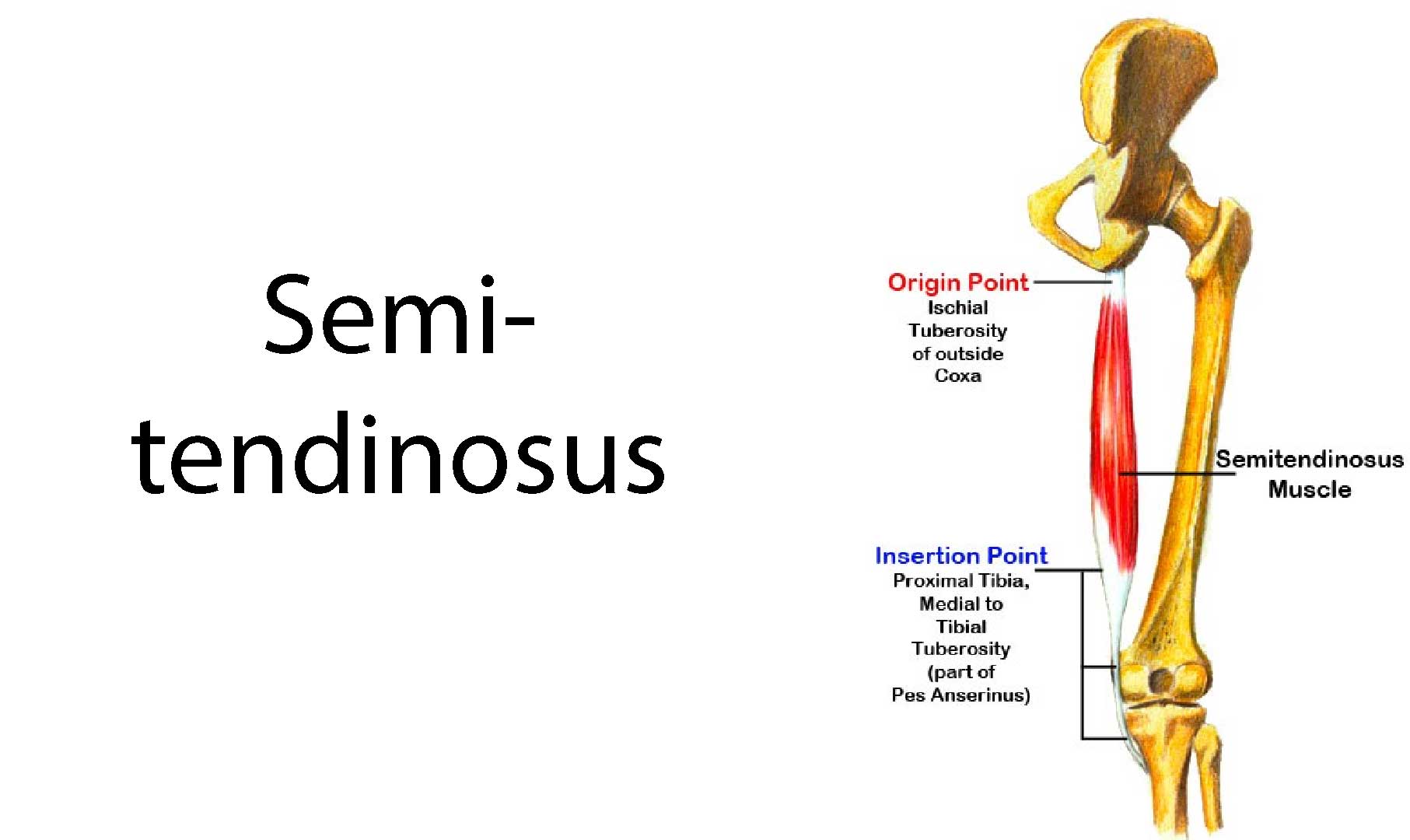
Semimembranosus Muscle
All of the hamstring muscles originate from the Ischial Tuberosity, and the Semimembranosus muscle is no exception. This muscle is flatter, wider, and is located deeper comparing to the Semitendinosus. Going down the back of the thigh this muscle actually has five insertion points. Inner part of the upper tibia is its main point of attachment. Other insertion points are also located not far from the knee joint. They include the outer femur, Popliteal Fascia, Medial Collateral Ligament, and Fascia of the Leg.
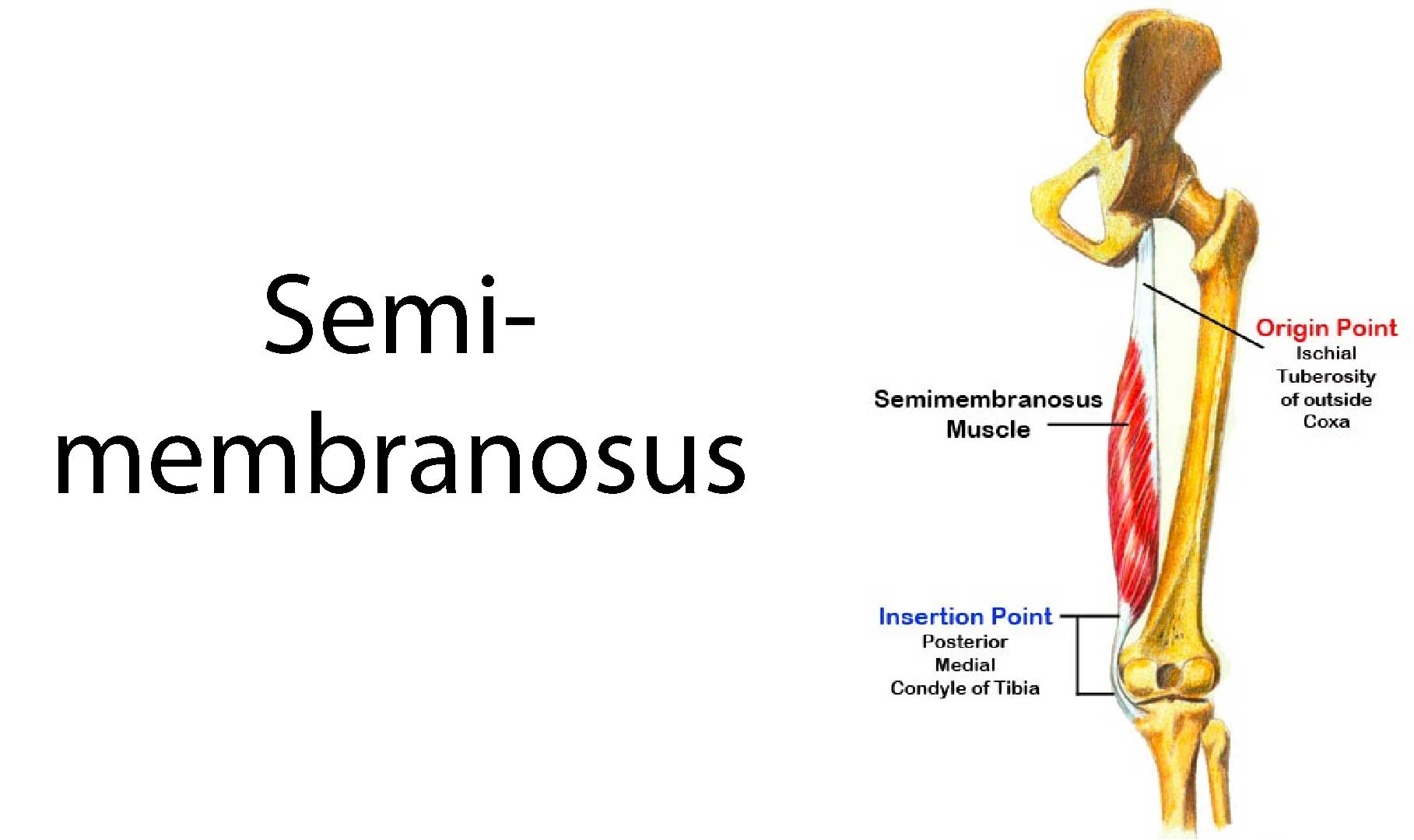
Hamstring Muscles Action
Hamstring muscles are crucial for most of our everyday activities, like going for a walk. If you are an athlete, they also help you when you run, jump, or kick. Acting as antagonist muscles to your quads, the hamstrings provide deceleration when the knee is extended. Another important hamstring muscle action is giving you some counteraction when you bend forward at the hips.

Anatomically, the most important aspect here is that the hamstring muscles cross two joints in your body – the hip joint and the knee joint. This means that they also create movement within these two joints. Let’s take a closer look at some of hamstring muscle actions:
Biceps Femoris Muscle
Both heads of the Biceps Femoris are responsible for knee flexion. Furthermore, the long head also extends the hip, as it’s tendon attaches to your sit bone, which is at the bottom of the pelvis. This action is crucial when you walk. Additionally, the Biceps Femoris muscle can externally rotate the lower leg if the knee is semi-flexed.

Semitendinosus and Semimembranosus Muscles
Just like the Biceps Femoris muscle, the Semitendinosus works together with Semimembranosus to flex the knee and extend the hip. These two muscles also perform several additional movements at the hip and knee joints. These hamstring muscles internally rotate your lower leg if your knee is flexed. Furthermore, if your hip is extended they provide internal rotation of the femur.
What to do if you pulled your hamstring
So what is a hamstring strain exactly? Most of us will experience pain in hamstring area at some point of our lives. A common reason for this can be a hamstring strain. This means that the muscle fibers in your hamstrings were either excessively stretched or torn. This happens especially frequent, if you are an athlete, and your sport requires sprinting or kicking.
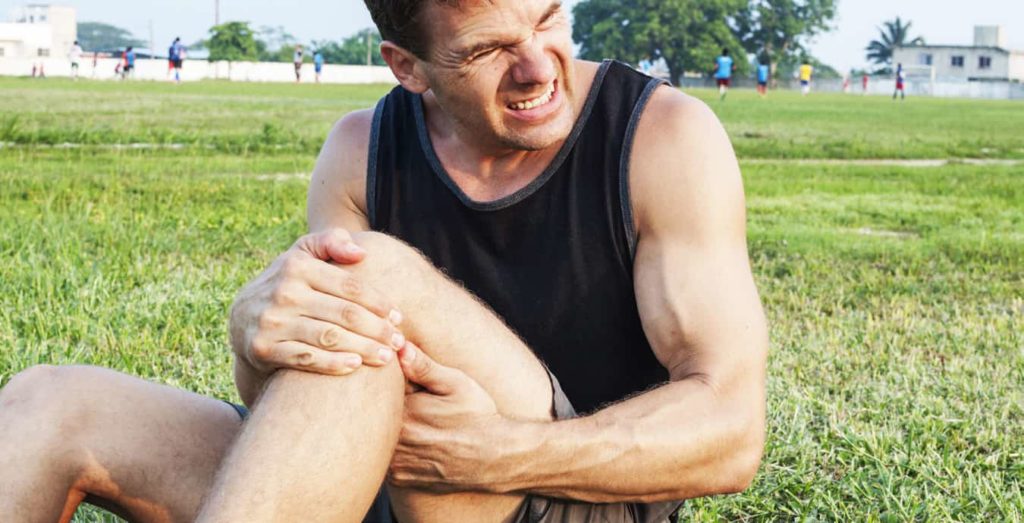
It is likely that some local blood vessels were also ruptured along with muscle fibers. In this case you may see some bruising in this area. Don’t worry about it too much, as most hamstring strains respond to very simple non-surgical treatment techniques.
Hamstring Tear Recovery
The RICE protocol is an effective method of recovery from most sports injuries, including hamstring strains. RICE in abbreviation and it stands for Rest, Ice, Compression, and Elevation. So take a break from whatever caused the strain. You may even want to use crutches for a short while. This way you will avoid putting weight on the injured area. A bag of ice or a cold pack will provide you with some great benefits as well. Low temperature will deal with any pain, inflammation, and swelling. If you pulled your hamstrings muscles, you may want to wear an elastic compression bandage, as well as elevate the leg above your heart, when resting. These are some great ways to take away the swelling.
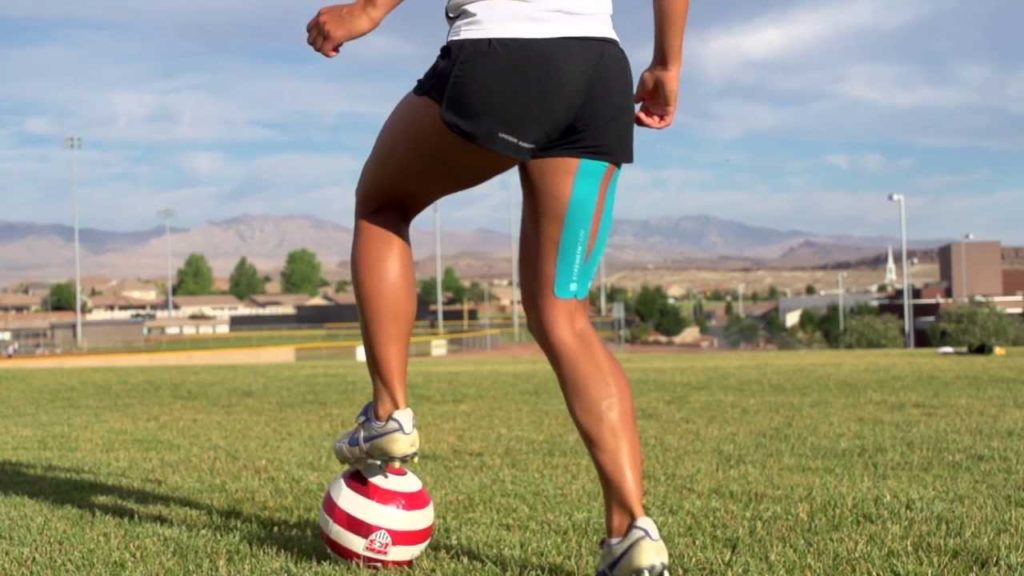
Once you finish dealing with swelling and inflammation, you can begin your active hamstring tear recovery. It all depends on the severity of the strain and usually takes 3-7 days. Try to move as early as you can, without causing any pain. First and foremost, your recovery program should focus on hamstring flexibility. So try to gently stretch your hamstrings and slowly improve their range of motion. As you advance further in the healing process, throw in some hamstring strengthening exercises as well. If you’re an athlete, make sure you consult your doctor before returning back to sport.
